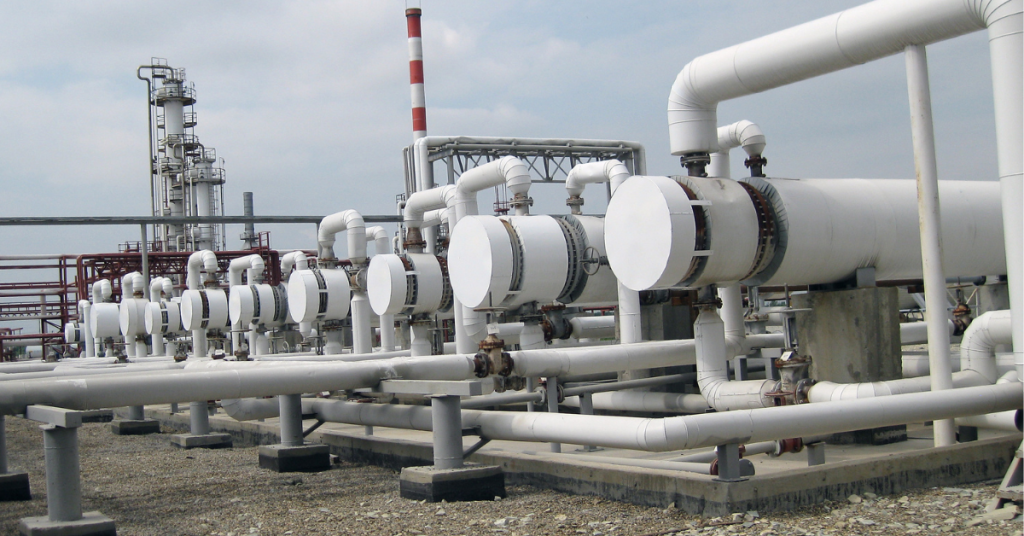As explained in this previous post, food processing operations require substantial energy. While utility costs are unavoidable, various factors can enhance efficiency and achieve long-term cost savings, including a facility’s water heating system. Considering your production specifications and overall environment, there are specific systems available that can effectively minimize energy consumption in your food or beverage production. Thus, it’s important to explore these systems and understand their differences. So, what are these systems, and how do they vary from one another?
Boilers
Boilers heat water indirectly by using a heat source to produce steam or hot water that circulates through a network of pipes or radiators. They are fueled by natural gas, oil, coal or biomass. Boilers also have diverse food and beverage production applications, making them one of the industry’s most commonly used heating systems.
In manufacturing settings, the hot water distribution from the boiler to different use points may result in heat loss through piping systems. Insulation and design considerations can help minimize that heat loss, however. Another option is adding an economizer, which captures waste heat from the boiler and sends it through a heat exchanger. This energy is then reused in other production processes, like clean-in-place (CIP) systems, at the plant.
Direct-fired water heaters
As its name implies, a direct-fired water heater directly heats the water using a burner or heating element. The heat source, such as natural gas, propane or electricity, is applied directly to the water via a burner or heating element typically located inside the water tank or chamber. Direct-fired systems tend to have very high energy efficiency because they heat the water directly, minimizing heat loss by design. They provide hot water on-demand with faster heat-up and response times. This can benefit manufacturing settings where various processes or equipment require a continuous hot water supply. Combustion byproducts result from the fuel burning of these systems, so adequate ventilation and safety measures must be in place to ensure a safe working environment.
Glycol heating systems
Glycol water heating systems utilize a mixture of water and glycol as the heat transfer fluid. A glycol-water solution is circulated through a closed-loop system comprised of a water heater or boiler, piping, pumps and heat emitters (e.g., radiators, fan coils or heat exchangers). The solution transfers heat from the water heater or boiler to the heat emitters. In those emitters, the heat is transferred to the surrounding water or other medium to provide warmth or maintain desired temperatures.
Glycol heating systems are commonly used in applications that need to prevent freezing or maintain consistent temperatures in the water distribution system, often in cold climates or environments where water may be exposed to low temperatures. Glycol heating methods can also utilize wasted energy by harnessing the heat generated from ammonia compressors used in refrigeration. This waste heat can be efficiently circulated through an underfloor system in freezers, preventing frost heave (using residual heat and glycol).
Considerations for these heating systems include potential glycol degradation, regular glycol concentration testing and maintenance, and ensuring proper ventilation and safety measures to address possible gas release during high temperatures or combustion.
Adding a heat pump
Heat pumps find widespread usage in HVAC systems, and they are additionally employed on the discharge side of refrigeration systems to provide assistance in water heating. This process involves sending heat to the rooftop condenser to keep the system operational. Subsequently, the discharge gas is intercepted, and a heat exchanger is installed in front of the condenser to aid in both water condensation and heating. Implementing this technology requires a significant upfront effort and is often easier to incorporate into new construction projects rather than retrofitting existing systems.
Pros and cons
Boilers are versatile, generating hot water and steam for various applications in food and beverage plants. Direct-fired heaters provide more precise temperature control, while glycol systems offer an even broader temperature range, operating at higher temperatures than steam with lower pressures and eliminating the need for a dedicated boiler attendant. Boilers can also improve efficiency through various enhancements such as heat reuse and insulation.
In general, direct-fired systems have a smaller footprint and achieve and maintain target temperatures more quickly. Both direct-fired and glycol systems can be more energy-efficient but only in specific applications, which can limit large-scale operations. While water is cheaper, glycol’s superior heat transfer makes it highly efficient. Glycol’s stability also prevents chemical degradation that could lead to system corrosion or component fouling, avoiding costly repairs or replacements.
Designing, installing or commissioning any system requires a precise and accurate approach from the very beginning. Stellar offers a comprehensive range of solutions, regardless of the project size, providing a single source for all your needs from initial conception to project commissioning and beyond.
Have questions about energy conservation strategies for your plant? Email us at foodforthought@stellar.net or give us a call at 800.488.2900.



